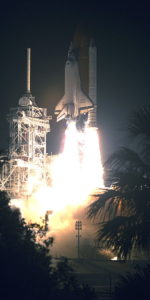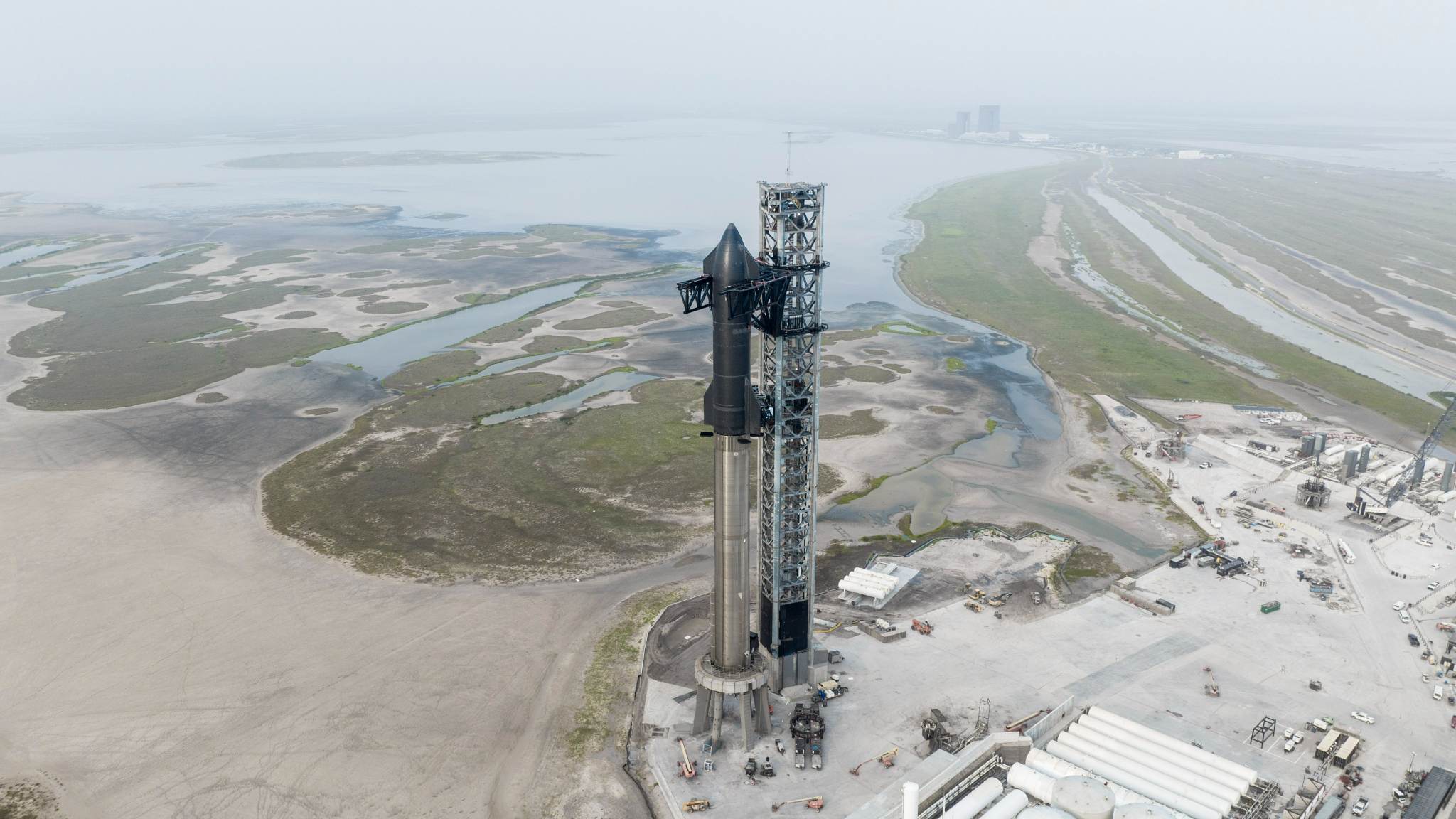
SpaceX is aiming for two missions from opposite coasts of the United States in the coming days, as a veteran Falcon 9 laden with 50 customer payloads from 13 sovereign nations stands ready to fly from Vandenberg Space Force Base, Calif., at 11:47 p.m. PDT Thursday (2:47 a.m. EDT Friday), and a triple-barreled Falcon Heavy targets a 7:36 p.m. EDT launch from historic Pad 39A at Florida’s Kennedy Space Center (KSC) on Tuesday, 18 April with the first of three heavyweight ViaSat-3 ultra-high-capacity broadband satellites. Additionally, the Hawthorne, Calif.-headquartered organization looks set for the first orbital-velocity test flight of its Starship/Super Heavy “stack” out of Starbase in Boca Chica, Texas, as early as next week, “pending regulatory approval”, which promises to inject added drama into an already busy April.
Powered uphill by the 33 Raptor engines of its Super Heavy core stage—with a thrust reportedly as high as 16.7 million pounds (7.5 million kilograms)—the vehicle stands to enter the record books as the most powerful rocket ever orbited, with a liftoff impulse almost twice that of NASA’s Space Launch System (SLS). According to SpaceX, it can lift up to 330,000 pounds (150,000 kilograms) of payload to low-Earth orbit in its fully reusable configuration and up to 500,000 pounds (250,000 kilograms) in an expendable configuration.
Last week, SpaceX reported that the 394-foot-tall (120-meter) vehicle was fully stacked at Starbase, tracking a launch rehearsal in the second week of April, “followed by Starship’s first integrated flight test ~week later, pending regulatory approval”. Late last night, SpaceX tweeted that in fact no launch rehearsal would occur this week, but teams remained “focused on launch readiness” ahead of a launch “as soon as next week”.
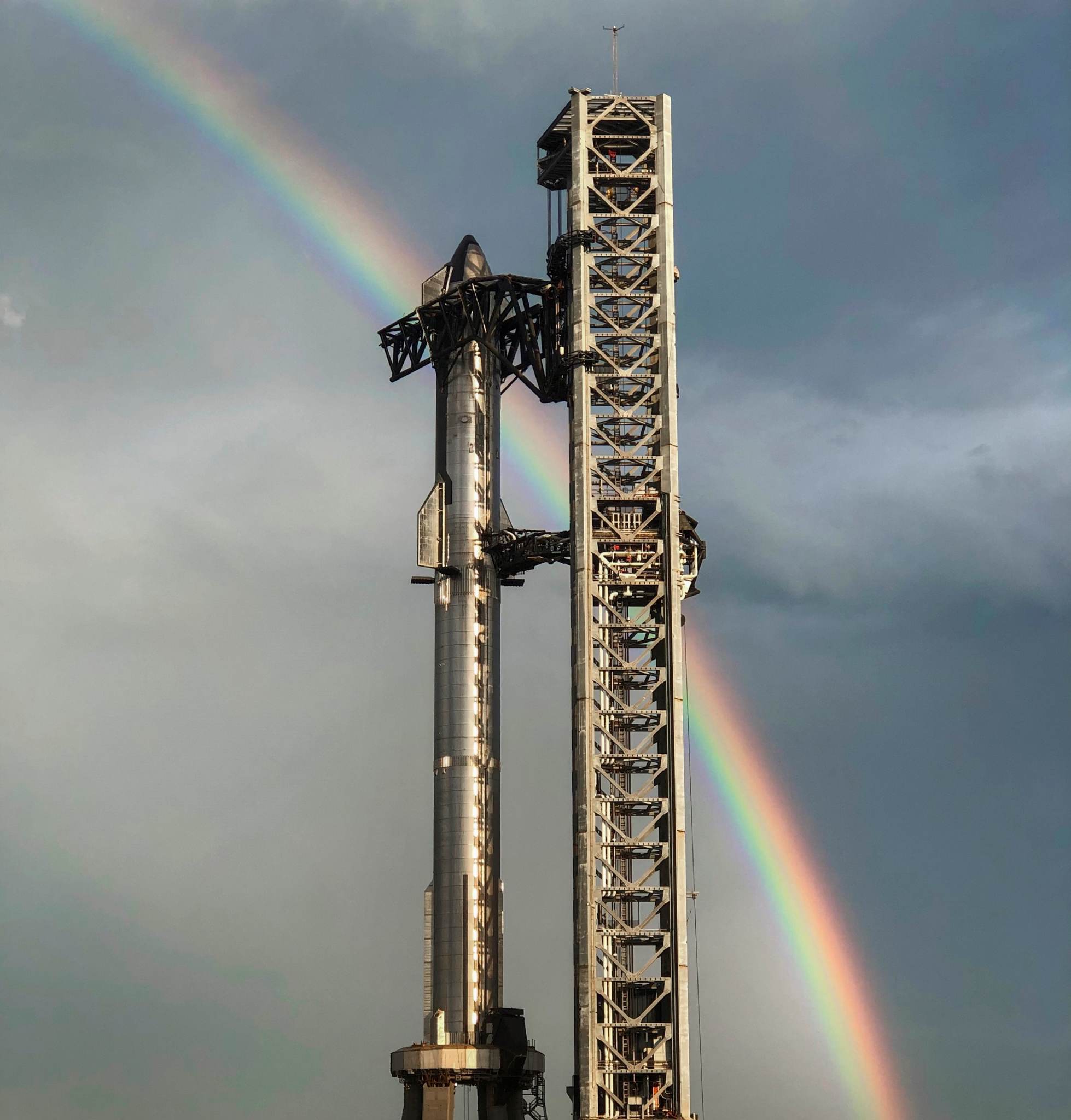
With liftoff of this long-awaited flight thus trending into April’s third week, the day of launch will kick off at T-99 minutes when liquid oxygen and methane begin flowing into the propellant tanks of the Super Heavy and the Starship. After fueling wraps up, the 33 Raptor engines will be chilled at T-16 minutes, ahead of the Terminal Count and “Excitement Guaranteed”—according to SpaceX—as the Engine Start Sequence begins at T-8 seconds and heads for T-0.
The 230-foot-tall (70-meter) Super Heavy will power the stack aloft for the first 2.5 minutes of flight, before separating in a fashion not unlike a Falcon 9 core stage, albeit on the most extreme of steroids. The booster will then perform a 55-second “boost-back” burn, slowing to transonic speeds at 7.5 minutes after launch, then executing a 23-second “landing” burn for a vertical splashdown in the Gulf of Mexico, about 20 miles (32 kilometers) off the Texas Coast, a little more than eight minutes into the flight.
Meanwhile, after separation from the booster, the 164-foot-tall (50-meter) Starship will ignite its own Raptor engines for 6.5 minutes, before shutting down and coasting three-quarters of the way around the world for the next 68 minutes. Like the Super Heavy, it is not intended for recovery on this inaugural test flight and will splash down in the Pacific Ocean, about 60 miles (100 kilometers) northwest of Kauai in Hawaii.
The upcoming mission comes on the heels of more than a decade of development and multiple years of testing of both the Super Heavy and Starship itself at Boca Chica. Tethered and untethered low-altitude Starhopper flights in the late spring and summer of 2019 reached peak heights of close to 500 feet (150 meters), whilst a succession of high-altitude Starship tests between August 2020 and May 2021 gradually expanded this envelope to achieve a maximum height of 41,000 feet (12.5 kilometers).
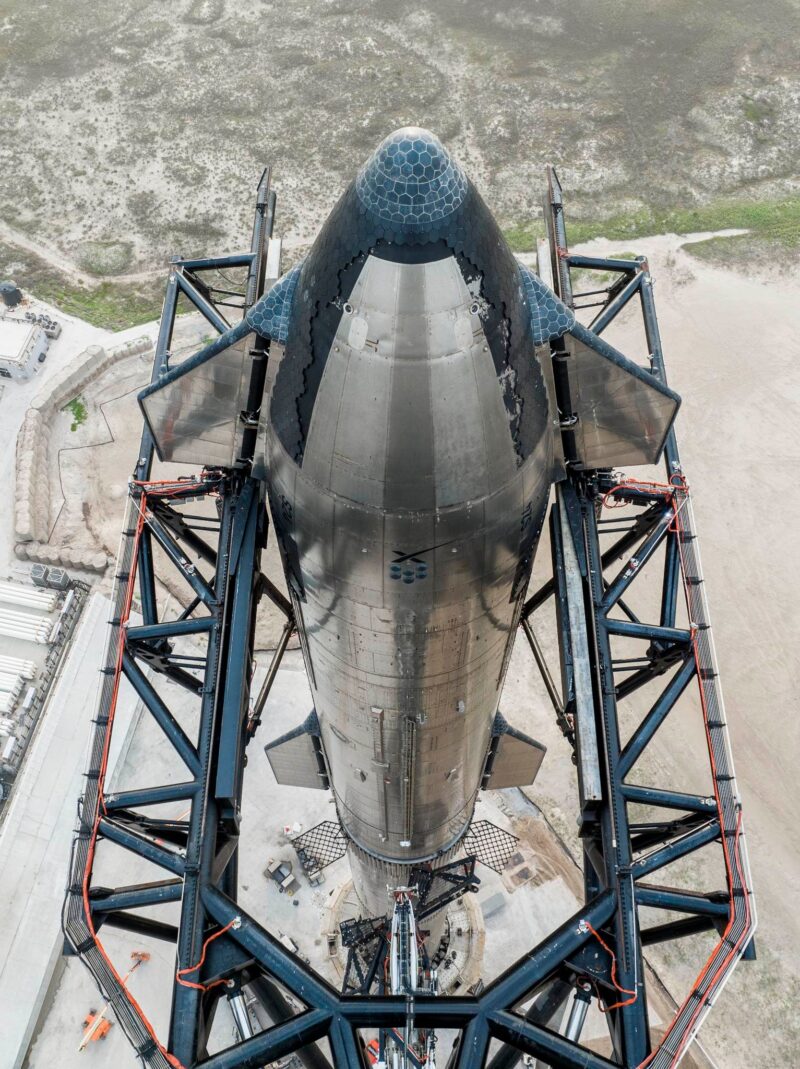
Booster 7, assigned to April’s orbital flight test, completed initial cryogenic proof-testing in April of last year and performed a series of increasingly complex static-firings of its Raptor engines between August and earlier this spring. Following a Wet Dress Rehearsal (WDR) in January, an attempted ten-second firing in the second week of February saw 31 of the 33 engines on Booster 7 successfully ignited, with one engine disabled just prior to the test and another prematurely shut down.
Elsewhere, Ship 24—the Starship earmarked for the orbital-velocity flight test—wrapped up its own cryogenic proof-tests last summer and in September its six Raptor engines were satisfactorily test-fired, albeit at the expense of losing around 30 of its 25,000 silica Thermal Protection System (TPS) tiles. Stacked atop Booster 7 for several weeks of additional tests last fall, it was returned to the hangar for TPS work in January, then returned to the pad and declared “fully stacked” for launch last week.
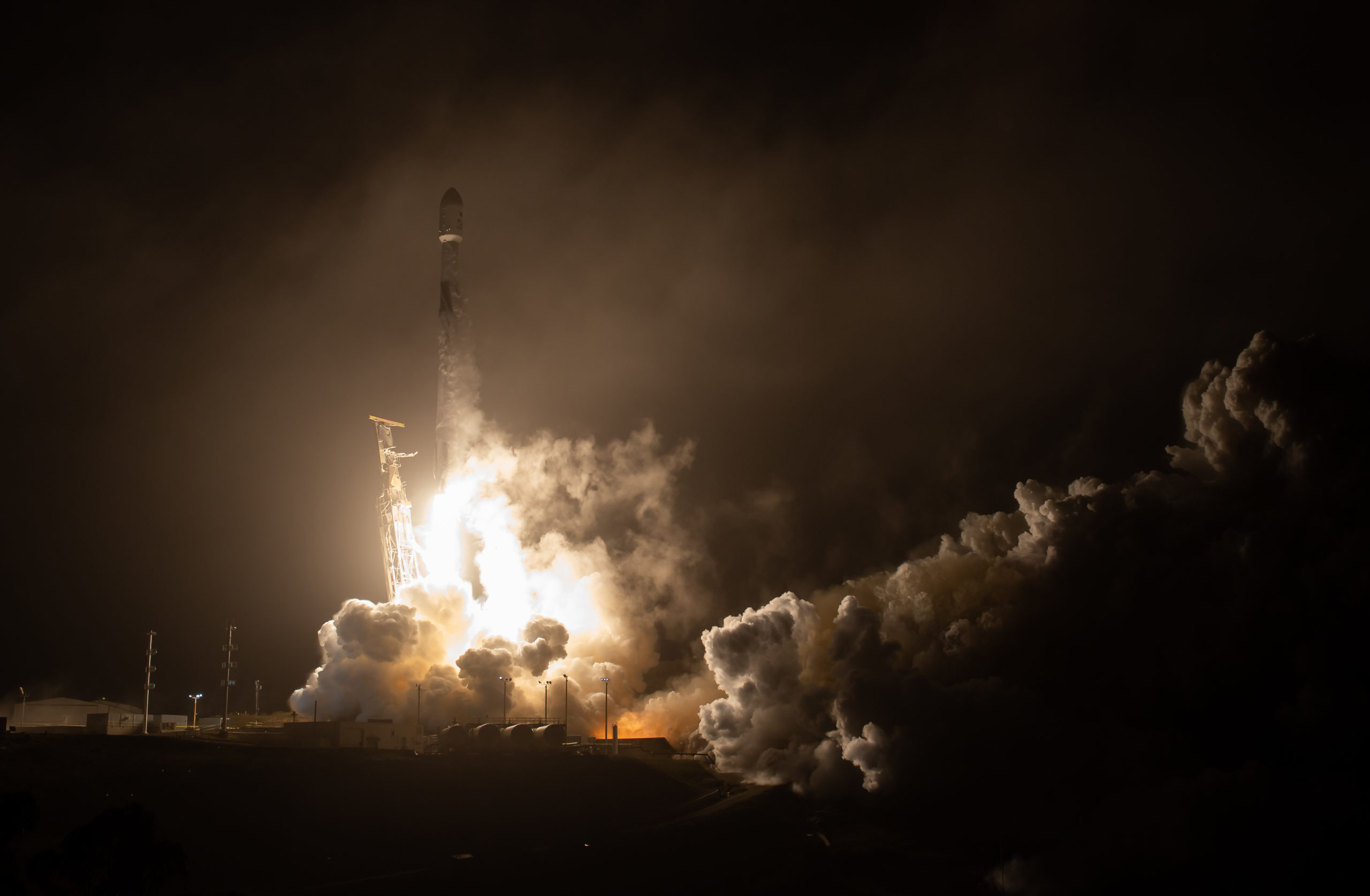
Whilst the first orbital-velocity test flight of the Super Heavy/Starship combo undoubtedly will dominate the headlines in the coming days, SpaceX is also gearing up for a pair of launches—its third and fourth of April—from Space Launch Complex (SLC)-4E at Vandenberg and historic Pad 39A at KSC. A ten-times-flown Falcon 9 will rise from the mountain-ringed West Coast launch site no sooner than 11:47 p.m. PDT Thursday (2:47 a.m. EDT) Friday, laden with the Transporter-7 haul of 50 Earth observation, technology demonstration, Internet of Things (IoT), Signals Intelligence (SIGINT) and educational payloads from 13 sovereign nations.
B1063, which first flew in November 2020 and logged five launches last year alone, was originally set to fly this mission late Tuesday, before SpaceX elected to slip T-0 firstly to late Wednesday and eventually late Thursday to await improved weather conditions at Vandenberg. During a long-duration mission expected to run for 2.5 hours, the 50 payloads will deploy from the Falcon 9’s second stage and include in their number a trio of Canadian pollution-monitoring satellites, educational, Earth observation and amateur radio satellites for Turkey, a technology demonstrator for the United Arab Emirates (UAE), a French geolocation platform for tracking seagoing ships and a Colombian Air Force-sponsored payload to conduct cartographic and topographic mapping.
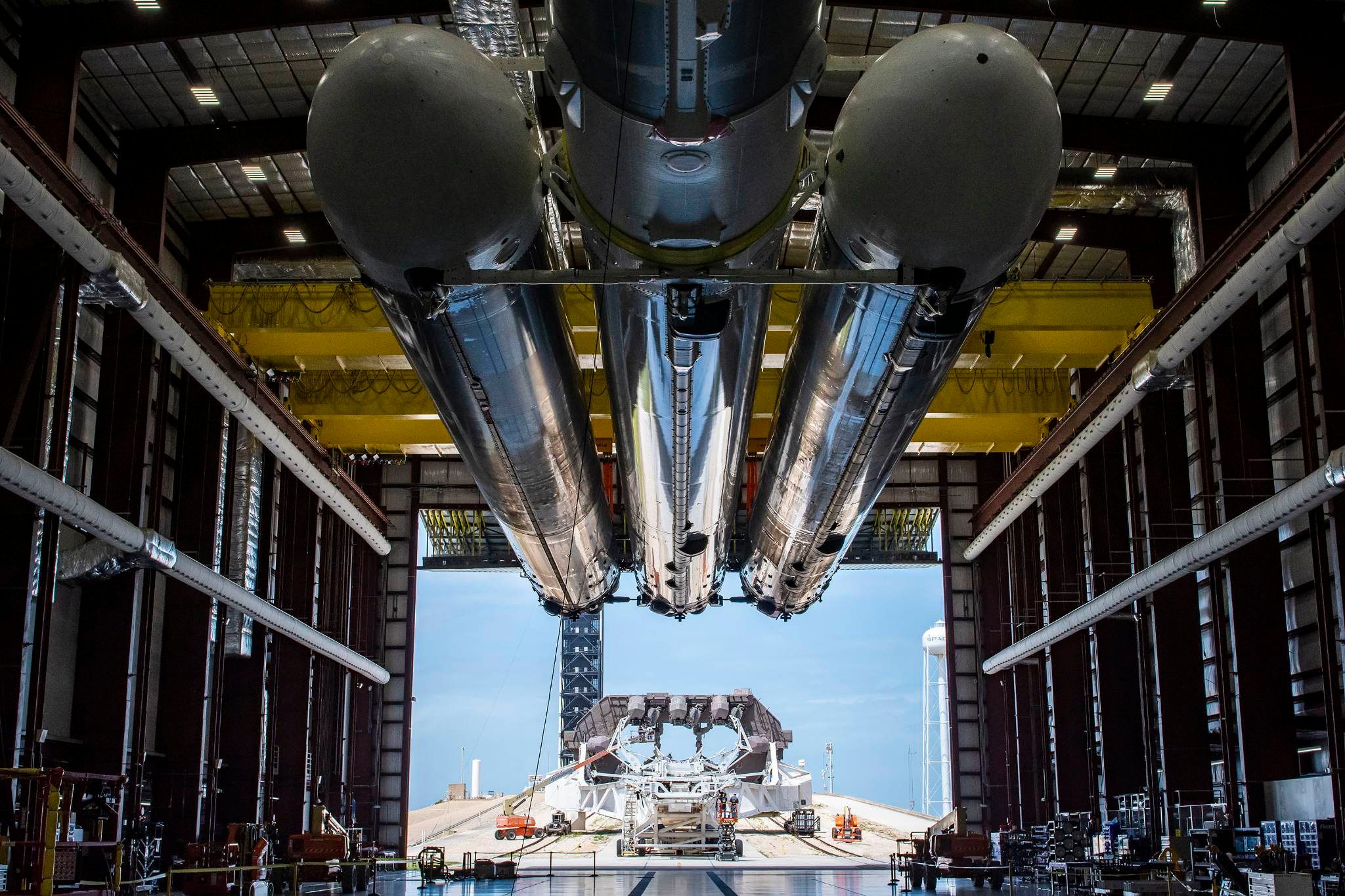
Additionally, D-Orbit’s ION Satellite Carrier Vehicle (SCV)-010, nicknamed “Masterful Matthaeus”, and Momentus’ Vigoride-6 space tug will be deployed from the Falcon 9’s second stage to deliver their own payloads into specific orbital locations. This mission marks the seventh Transporter “haul”, following on the heels of six flights between January 2021 and January 2023 which placed a grand sum of 549 discrete payloads into space on behalf of customers from 37 sovereign nations.
Next up after Transporter-7—assuming the Starship/Super Heavy does not fly first—will be SpaceX’s second Falcon Heavy of 2023, targeting a 7:36 p.m. EDT liftoff on Tuesday, 18 April. The triple-barreled rocket boasts a brand-new core stage and two flight-proven side-boosters, all three of which will be intentionally expended on this mission to achieve the exacting orbital-insertion parameters demanded by the primary payload.
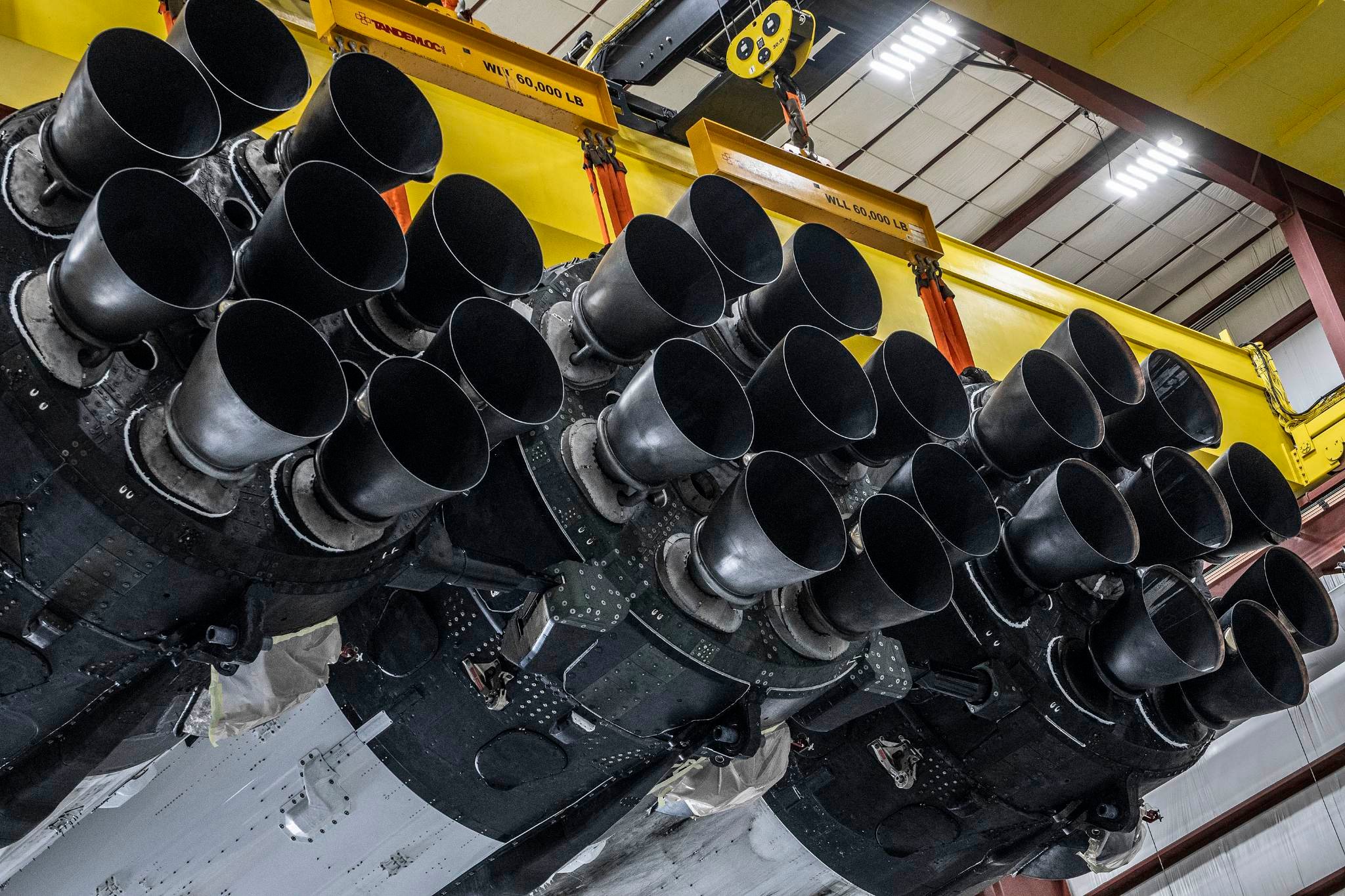
That payload is the first ViaSat-3 ultra-high-capacity broadband satellite, which tips the scales at almost 13,000 pounds (6,000 kilograms) and will use the Heavy’s immense muscle for direct insertion into a near-Geostationary Earth Orbit (GEO) spot for its anticipated 15 years of operational service.
Each member of the ViaSat-3 Ka-band series of satellites will furnish over of one terabit per second—equivalent to 1,000 gigabits per second—of network capacity. This will deliver a global broadband network with sufficient bandwidth to deliver affordable, ultra-high-speed, high-quality internet and video streaming services.
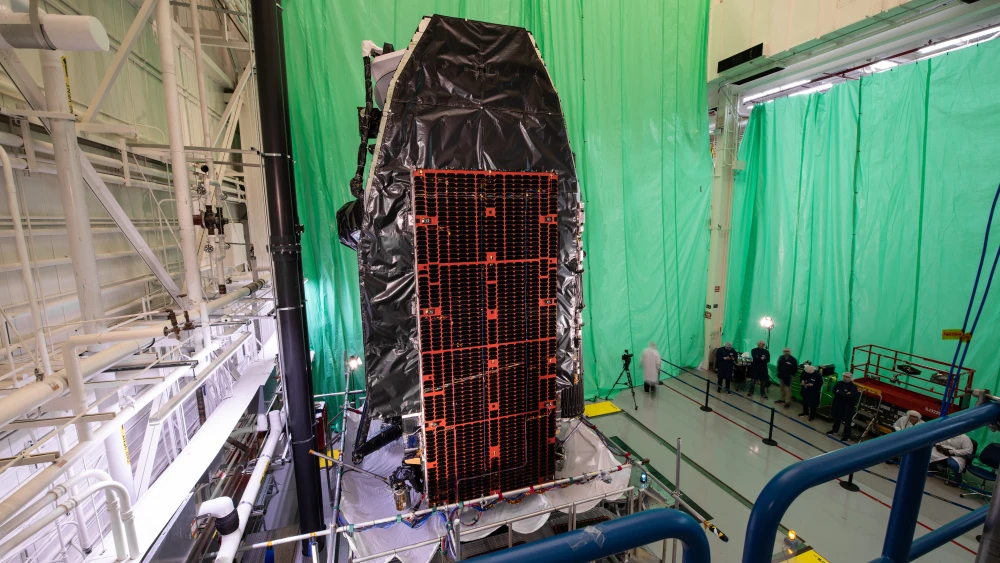
This first member of the ViaSat-3 fleet will provide coverage of the Americas, with two follow-on satellites set to launch via a United Launch Alliance (ULA) Atlas V and Arianespace’s upcoming Ariane 6 to focus on the Europe, the Middle East and Africa (EMEA) Region and Asia and the Pacific (APAC) Region. ViaSat contracted the ViaSat-3 Americas launch to SpaceX back in October 2018, with an expectation that it would fly in the 2020-2022 timeframe, although delays arose following the COVID-19 pandemic, together with contractor and supply-chain issues.
In June 2021, ViaSat announced it had completed payload integration and performance testing at its Tempe, Ariz., factory and was ready to ship it to Boeing’s El Segundo, Calif., facility for integration into the satellite bus. Last September, ViaSat-3 Americas was fully integrated and by mid-October had completed its mechanical interface tests, ahead of its Final Integrated Satellite Test (FIST) late last November.
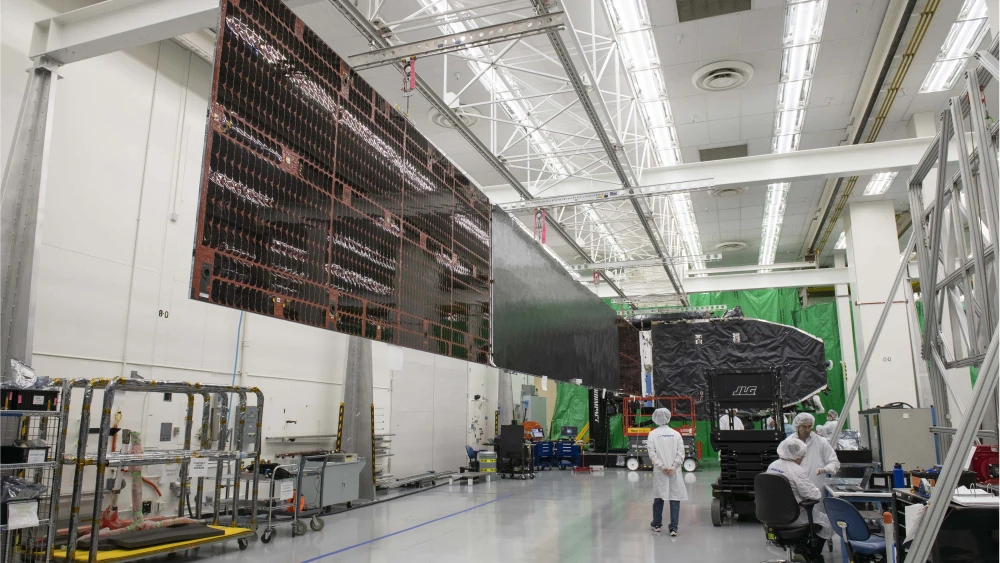
The satellite was delivered to the Space Coast last month. When fully deployed in orbit, it will boast a wing span of 144 feet (44 meters) from tip to tip across its twin solar arrays, which have the capacity to produce 30 kilowatts of electrical power.
According to ViaSat, the Falcon Heavy was selected for the ViaSat-3 Americas launch on account of its ability to emplace the satellite extremely close to geostationary orbit. This will enable it to commence In-Orbit Testing (IOT) quickly, rather than spending weeks or months maneuvering to its optimum position.




